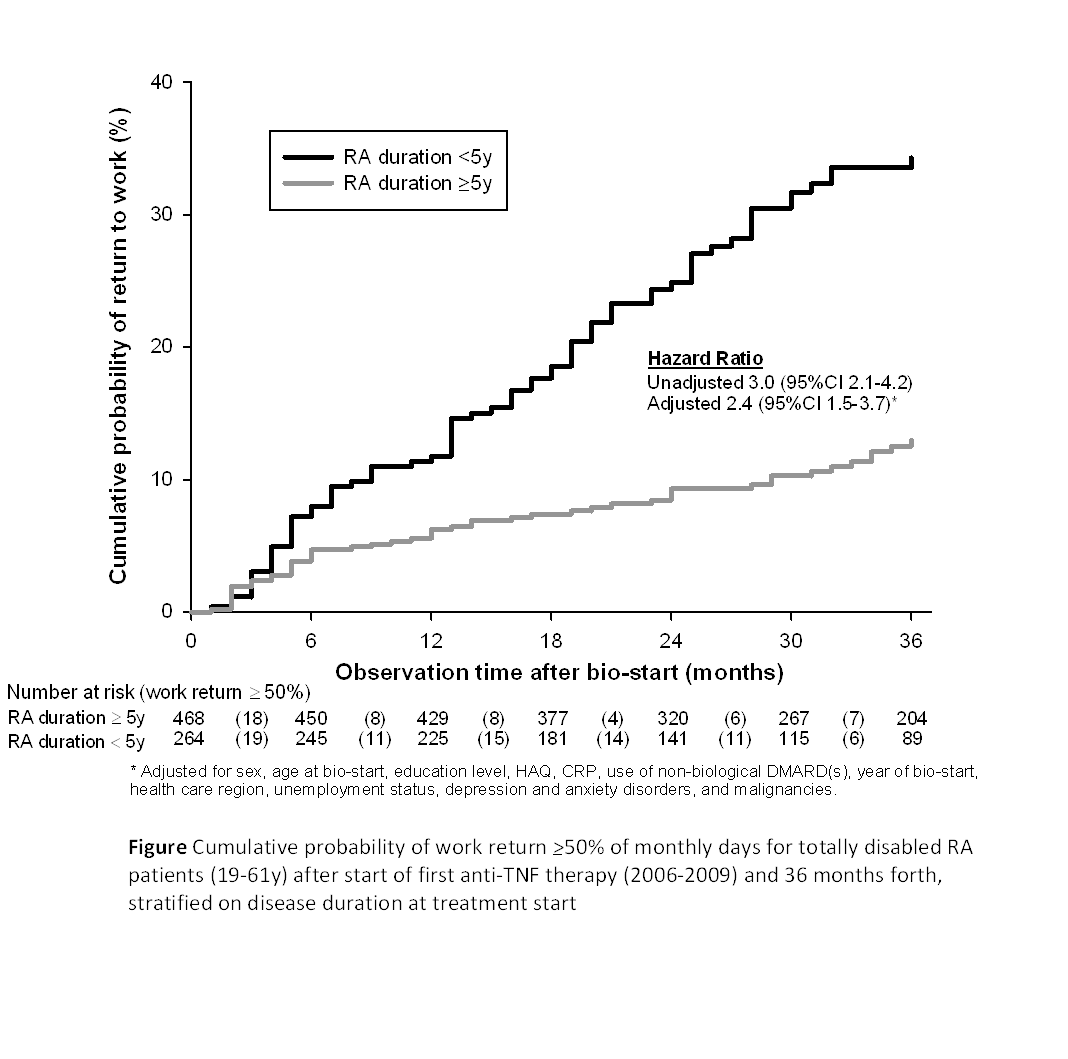Session Information
Session Type: Abstract Submissions (ACR)

Disclosure:
T. Olofsson,
None;
I. F. Petersson,
Pfizer, Wyeth, Abbott, UCB Pharma,
5;
J. Eriksson,
None;
M. Englund,
None;
P. Geborek,
None;
L. T. H. Jacobsson,
Abbot, BMS, MSD, Pfizer, UCB Pharma,
6;
J. Askling,
None;
M. Neovius,
Pfizer Inc,
6.
« Back to 2012 ACR/ARHP Annual Meeting
ACR Meeting Abstracts - https://acrabstracts.org/abstract/predictors-of-return-to-work-during-3-years-after-start-of-first-tumor-necrosis-factor-antagonist-in-a-national-cohort-of-biologics-treated-patients-with-rheumatoid-arthritis/
